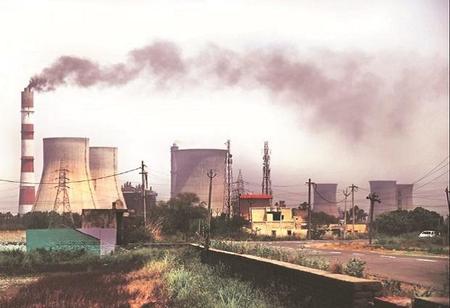On July 14, the European Union launched new legislation, Fit for 55, to cut its GHG emissions by 55 per cent by 2030 and to net zero by 2050. This is a welcome step for climate action since it becomes the EU’s announcement into law, protecting it from the winds of political change. It opens novel markets for Indian industry, for example for electric vehicles. Nevertheless, it also introduces a potentially adverse policy called the carbon border adjustment mechanism (CBAM).
The EU has had a carbon emission trading system since 2005, with a current market price of 50 euros per tonne of carbon. With Fit for 55, the EU would bring more segments into this trading scheme and tighten its allocation of permits. The EU’s carbon price is expected to go up as a result, making its domestic products more expensive than imports from countries that do not have such rules. The new CBAM is meant to level the playing field between indigenous and imported products.
CBAM would require foreign producers to pay for the carbon emitted while manufacturing their products. Increasing the price of carbon is meant to discourage consumers from buying carbon-intensive products and encourage producers to invest in cleaner technologies. The adjustment woul be applied to energy-intensive products that
are widely traded by the EU, such as iron and steel, aluminium, cement, fertiliser, and electricity.
It may also affect downstream industries — such as, automobile manufacturers may buy domestic low-carbon steel rather than imported high-carbon steel. India is Europe’s third-largest trading partner, and it does not have its own carbon tax or cap. So, CBAM should be a cause for concern for it. A UNCTAD study released on July 14 foresees that India would lose $1-1.7 billion in exports of energy-intensive products such as steel and aluminium — India’s goods trade with the EU was $74 billion in 2020.
The CBAM would undoubtedly be very complex to administer. The adjustment rate would vary by country and product, depending on the carbon intensity of the production technology and the electricity mix. It would require verification of data reported by every foreign supplier, including intermediate products from third countries. It may have to depend on country defaults or sectoral benchmarks, at the risk of less than perfect outcomes.
The EU Parliament’s endorsement is expected to take two years, which would be followed by a three-year transition period before the CBAM is imposed in 2026. What should Indian industry do to prepare in the interim? First, it should enter clean technology alliances with European industry. For example, India exports semi-finished and flat-rolled products of iron or non-alloy steel, but such partnerships can support enhance the competitiveness of its high-technology stainless or alloy products.
Second, Indian firms should invest in more renewable electricity and energy efficiency. They can adopt science-based aims for emission reduction and internal carbon pricing to incentivise low-carbon choices. The government can extend the perform-achieve-trade scheme to more industries and offer finance to MSMEs to upgrade to clean technologies. WRI India’s analysis shows that carbon dioxide emissions from the iron and steel industry can be condensed from 900 million tonnes to 500 million tonnes in 2035 through greater electrification, green hydrogen, energy efficiency, and material efficiency.
